
Life sciences company Avantor (NYSE: AVTR) announced better-than-expected revenue in Q2 CY2025, but sales fell by 1.1% year on year to $1.68 billion. Its non-GAAP profit of $0.24 per share was in line with analysts’ consensus estimates.
Is now the time to buy Avantor? Find out by accessing our full research report, it’s free.
Avantor (AVTR) Q2 CY2025 Highlights:
- Revenue: $1.68 billion vs analyst estimates of $1.67 billion (1.1% year-on-year decline, 0.6% beat)
- Adjusted EPS: $0.24 vs analyst estimates of $0.25 (in line)
- Adjusted EBITDA: $279.8 million vs analyst estimates of $289.7 million (16.6% margin, 3.4% miss)
- Operating Margin: 7.7%, down from 10.3% in the same quarter last year
- Free Cash Flow Margin: 7.4%, down from 13.8% in the same quarter last year
- Organic Revenue was flat year on year (-2% in the same quarter last year)
- Market Capitalization: $9.16 billion
"In the second quarter, we remained focused on driving growth, enhancing operating leverage, and executing with discipline," said Michael Stubblefield, President and Chief Executive Officer.
Company Overview
With roots dating back to 1904 and embedded in virtually every stage of scientific research and production, Avantor (NYSE: AVTR) provides mission-critical products, materials, and services to customers in biopharma, healthcare, education, and advanced technology industries.
Revenue Growth
A company’s long-term sales performance can indicate its overall quality. Any business can have short-term success, but a top-tier one grows for years. Unfortunately, Avantor’s 2% annualized revenue growth over the last five years was tepid. This fell short of our benchmarks and is a poor baseline for our analysis.
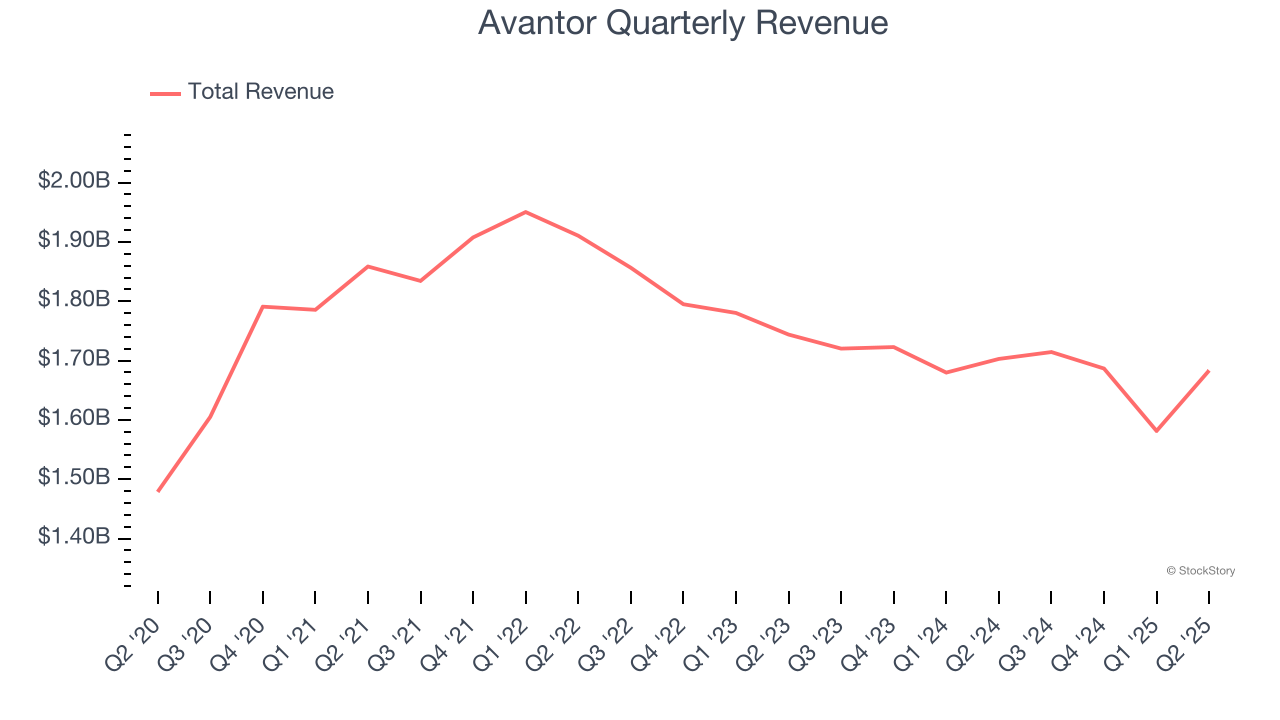
Long-term growth is the most important, but within healthcare, a half-decade historical view may miss new innovations or demand cycles. Avantor’s performance shows it grew in the past but relinquished its gains over the last two years, as its revenue fell by 3.6% annually. 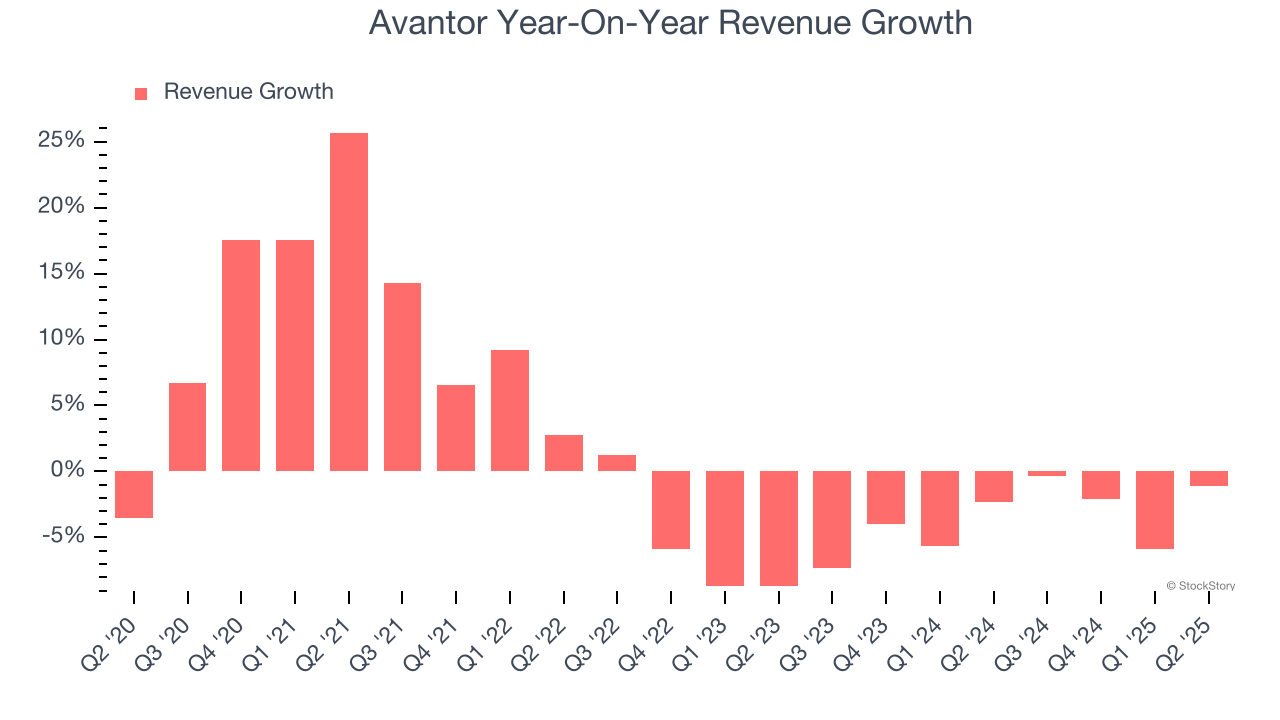
We can better understand the company’s sales dynamics by analyzing its organic revenue, which strips out one-time events like acquisitions and currency fluctuations that don’t accurately reflect its fundamentals. Over the last two years, Avantor’s organic revenue averaged 3.3% year-on-year declines. Because this number aligns with its two-year revenue growth, we can see the company’s core operations (not acquisitions and divestitures) drove most of its results. 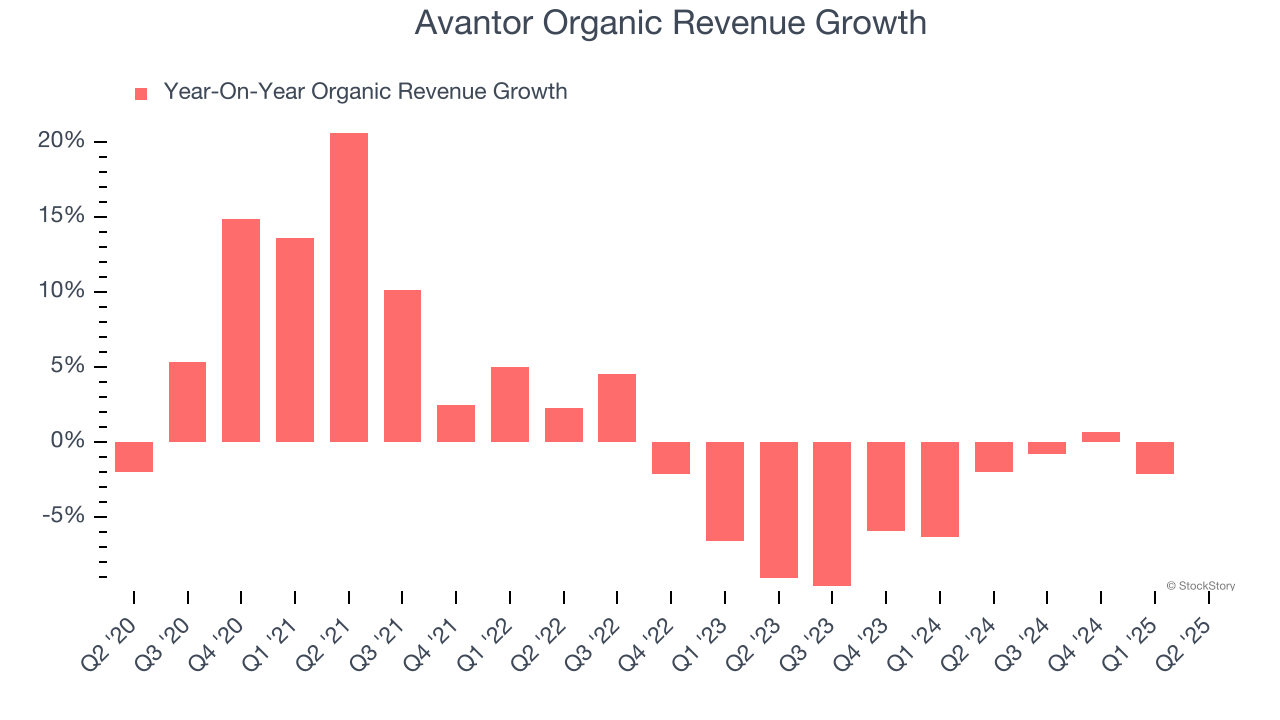
This quarter, Avantor’s revenue fell by 1.1% year on year to $1.68 billion but beat Wall Street’s estimates by 0.6%.
Looking ahead, sell-side analysts expect revenue to grow 1.9% over the next 12 months. Although this projection implies its newer products and services will spur better top-line performance, it is still below average for the sector.
Today’s young investors won’t have read the timeless lessons in Gorilla Game: Picking Winners In High Technology because it was written more than 20 years ago when Microsoft and Apple were first establishing their supremacy. But if we apply the same principles, then enterprise software stocks leveraging their own generative AI capabilities may well be the Gorillas of the future. So, in that spirit, we are excited to present our Special Free Report on a profitable, fast-growing enterprise software stock that is already riding the automation wave and looking to catch the generative AI next.
Adjusted Operating Margin
Adjusted operating margin is a key measure of profitability. Think of it as net income (the bottom line) excluding the impact of non-recurring expenses, taxes, and interest on debt - metrics less connected to business fundamentals.
Avantor has managed its cost base well over the last five years. It demonstrated solid profitability for a healthcare business, producing an average adjusted operating margin of 17.5%.
Analyzing the trend in its profitability, Avantor’s adjusted operating margin decreased by 1.8 percentage points over the last five years. This performance was caused by more recent speed bumps as the company’s margin fell by 2.9 percentage points on a two-year basis. We’re disappointed in these results because it shows its expenses were rising and it couldn’t pass those costs onto its customers.
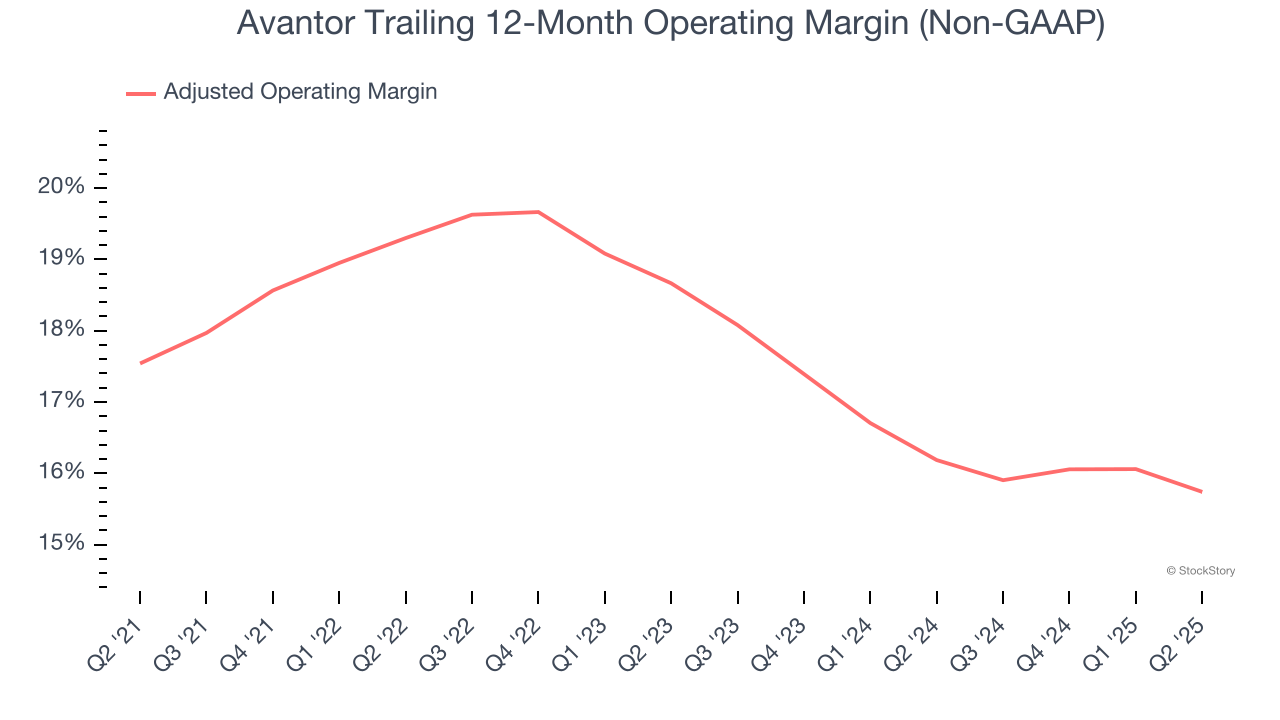
This quarter, Avantor generated an adjusted operating margin profit margin of 15%, down 1.3 percentage points year on year. This reduction is quite minuscule and indicates the company’s overall cost structure has been relatively stable.
Earnings Per Share
We track the long-term change in earnings per share (EPS) for the same reason as long-term revenue growth. Compared to revenue, however, EPS highlights whether a company’s growth is profitable.
Avantor’s EPS grew at a solid 7.4% compounded annual growth rate over the last five years, higher than its 2% annualized revenue growth. However, we take this with a grain of salt because its adjusted operating margin didn’t improve and it didn’t repurchase its shares, meaning the delta came from reduced interest expenses or taxes.
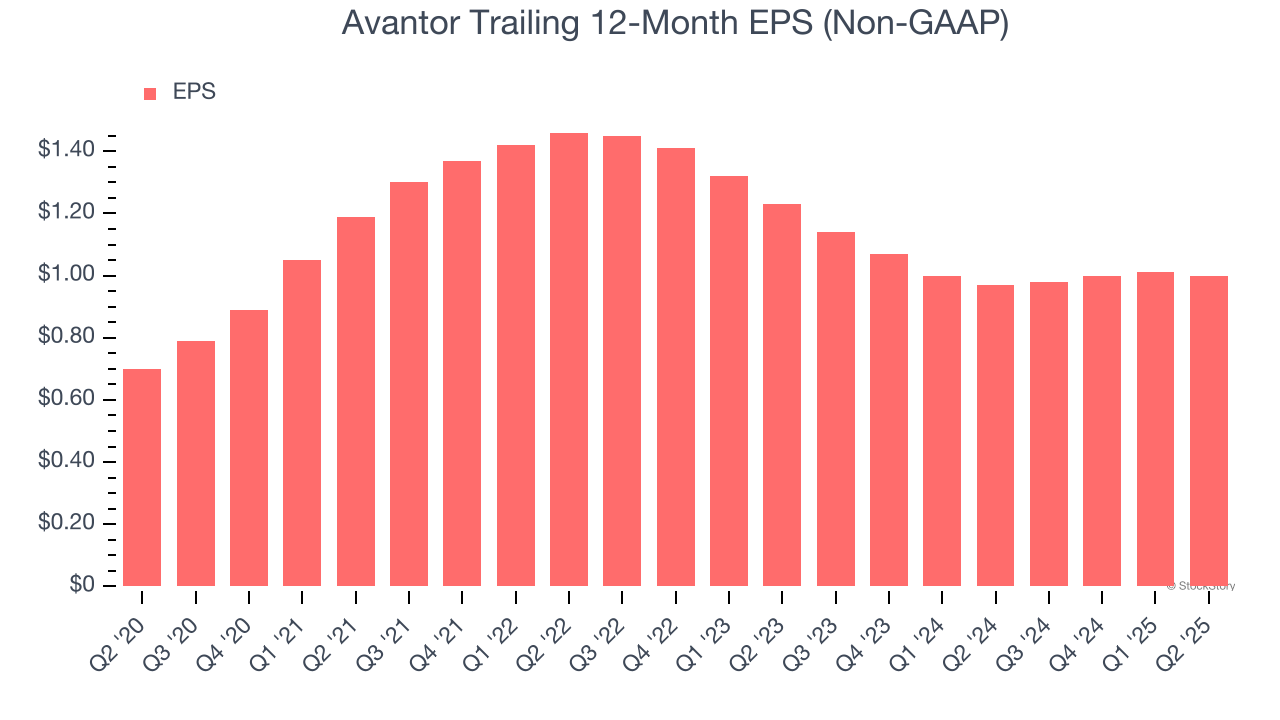
In Q2, Avantor reported adjusted EPS at $0.24, down from $0.25 in the same quarter last year. This print missed analysts’ estimates, but we care more about long-term adjusted EPS growth than short-term movements. Over the next 12 months, Wall Street expects Avantor’s full-year EPS of $1 to grow 8.1%.
Key Takeaways from Avantor’s Q2 Results
It was good to see Avantor narrowly top analysts’ revenue expectations this quarter. We were also happy its organic revenue was in line with Wall Street’s estimates. On the other hand, its EPS missed. Overall, this quarter could have been better. The stock traded down 6.8% to $12.53 immediately following the results.
Avantor may have had a tough quarter, but does that actually create an opportunity to invest right now? We think that the latest quarter is only one piece of the longer-term business quality puzzle. Quality, when combined with valuation, can help determine if the stock is a buy. We cover that in our actionable full research report which you can read here, it’s free.





